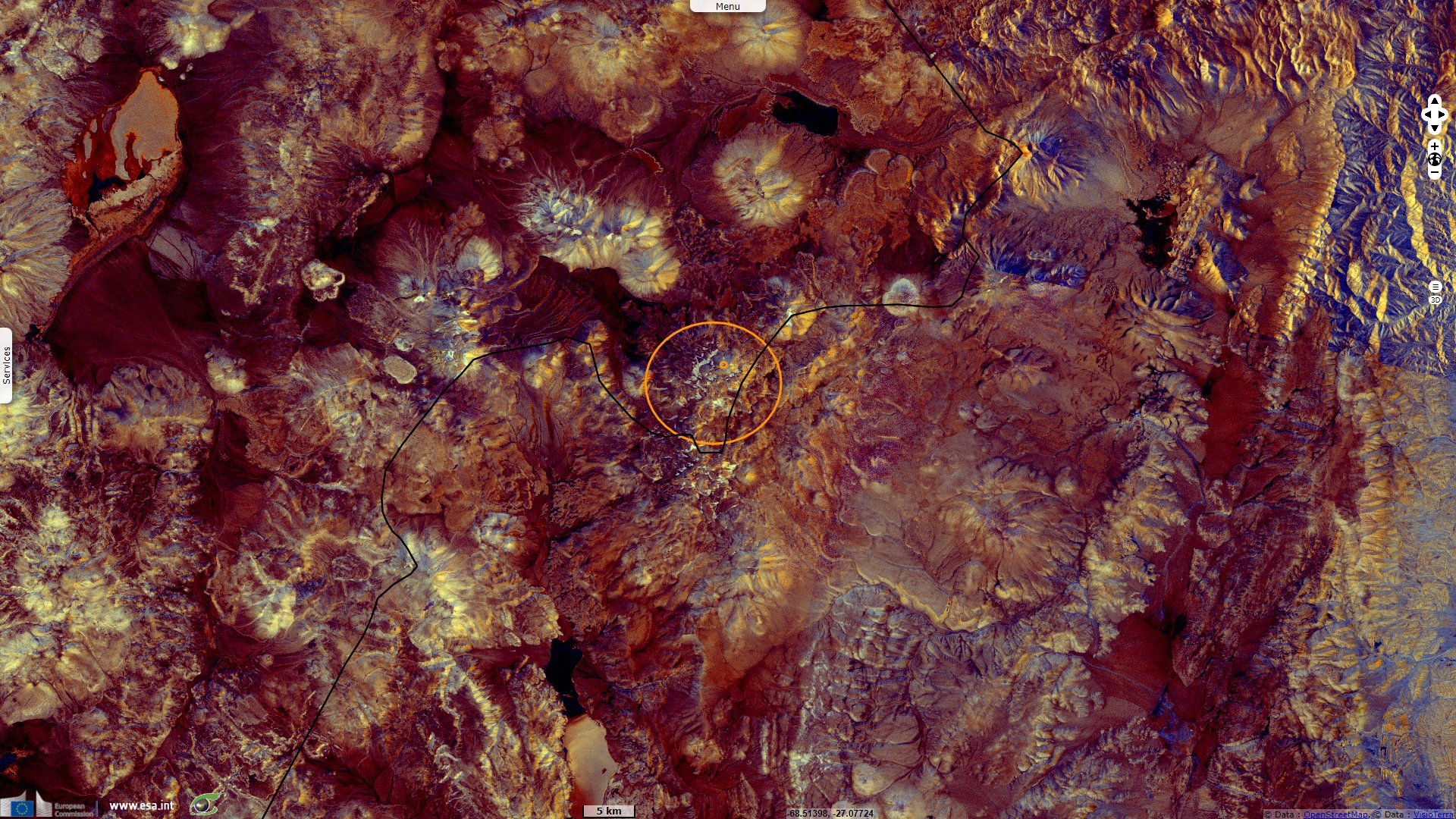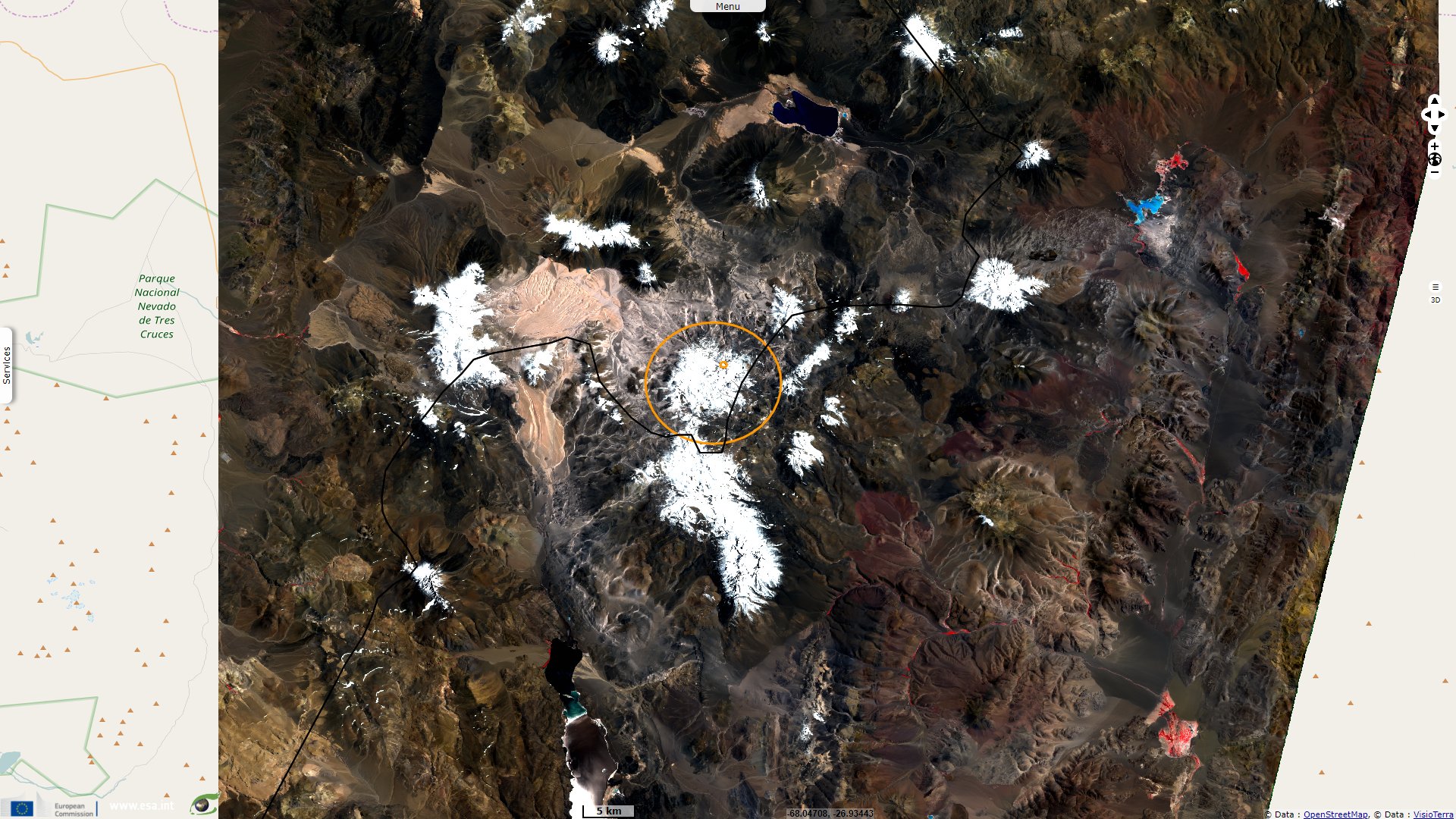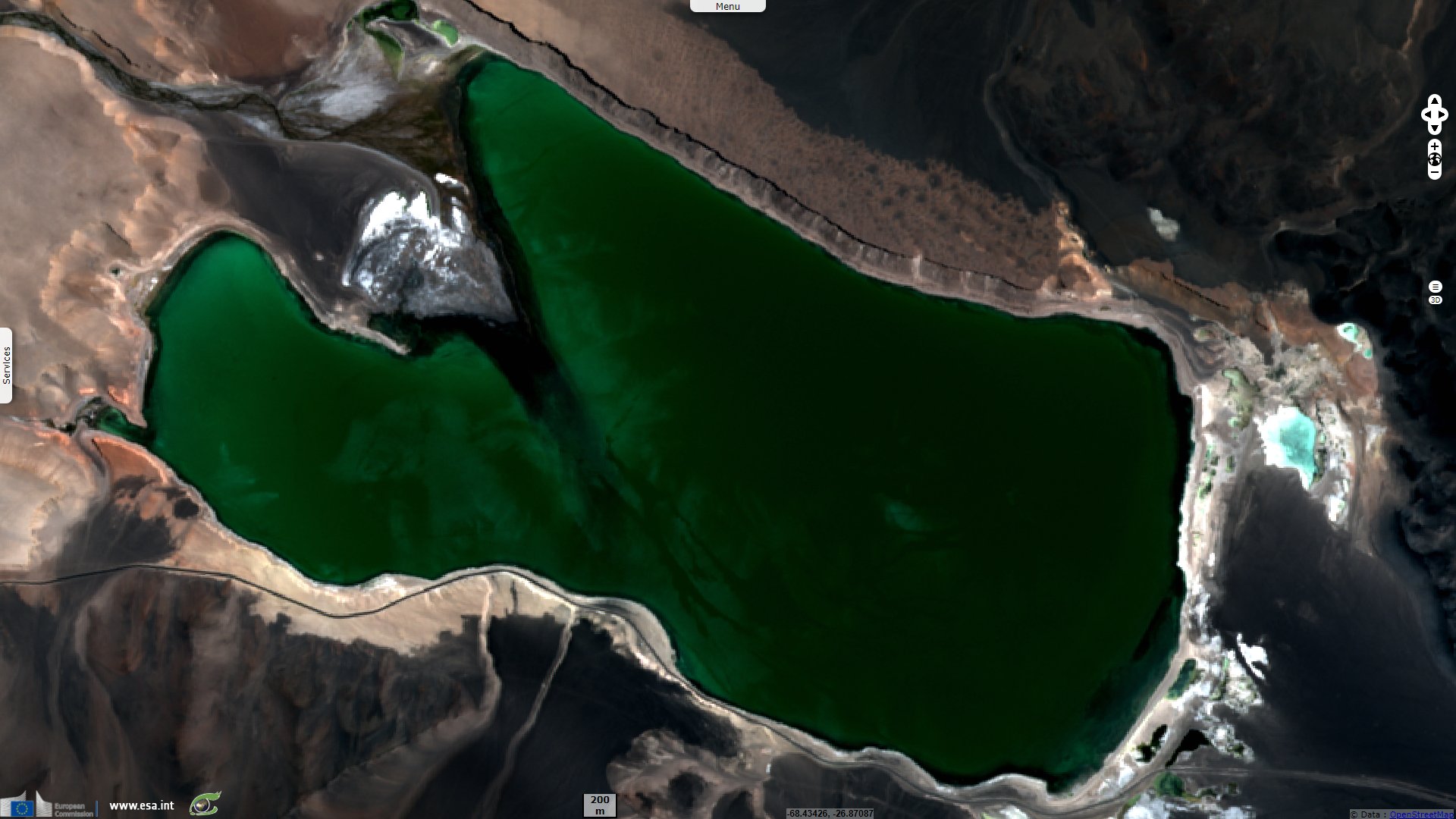Ojos del Salado, highest volcano and highest lakes in the World, Chile & Argentina
Sentinel-1 CSAR IW acquired on 17 January 2019 at 10:01:37 UTC
...
Sentinel-1 CSAR IW acquired on 14 February 2019 from 23:12:22 to 23:12:47 UTC
Sentinel-2 MSI acquired on 18 February 2019 at 14:37:51 UTC
Sentinel-2 MSI acquired on 18 April 2021 at 14:37:21 UTC
Sentinel-2 MSI acquired on 06 August 2021 at 14:37:31 UTC
...
Sentinel-1 CSAR IW acquired on 14 February 2019 from 23:12:22 to 23:12:47 UTC
Sentinel-2 MSI acquired on 18 February 2019 at 14:37:51 UTC
Sentinel-2 MSI acquired on 18 April 2021 at 14:37:21 UTC
Sentinel-2 MSI acquired on 06 August 2021 at 14:37:31 UTC
Keyword(s): Volcano, mountain range, glacier, snow, ice, geology, subduction, Atacama, Altiplano, Chile, Argentina, Pacific Ring of Fire
David Valdes
The Andes Handbook describes as follows: "Volcán Ojos del salado rises in the middle of a spectacular "mountain museum", in an extraordinarily remote and hard to access area. Here, the mountains of the Andes rise majestic amid salt flats, sandy desserts, flamingoes and colorful lakes. It is amazing that the snow and glaciers of their summits withstand the desert heat.", writes the Andes Handbook about the majestic Ojos del salado.
"Ojos del Salado is located south of the Atacama Desert, in the most arid and deserted sector of the Andes, over a great plain or plateau called the Altiplano. Belonging to Chile´s Third Region - to the interior of the city of Copiapó - and in the province of Catamarca on the Argentine side, Ojos del Salado achieves to outstand in an area full of six thousand plus meter peaks. Its 6893 meters above sea level give place for a number of records: the highest volcano in the world; the highest mountain in Chile; the second highest mountain of the Andes, following Aconcagua (6959m)."
Laguna Verde is a salt lake in the Andes Mountains of Chile. It lies in the Atacama Region, near San Francisco Pass. The stratovolcano Ojos del Salado, on the border with Argentina, marks the south border of its basin. The lagoon is apparently devoid of life, due to the extreme salinity of its waters. It takes its name from the beautiful turquoise colour of its waters. The lagoon has thermal baths that are naturally fed by the volcanic activity that reigns over the whole area. It is a meeting point and an excellent base for extreme sports enthusiasts to acclimatise and rest.
The Andes Handbook concludes: "'Ojos' is a Andesitic volcano. According to the age of eruption, the volcano is considered a recent volcano - called a Neovolcano - having had it's principle activity during the Pleistocene and Holocene ages. Actually, it shows a secondary volcanic activity, designated with the generic name 'fumarolica.' Nevertheless, they've observed sulfactic activity in 1937 and 1956, and more recently in November of 1994, when it produced an intermittent gray column of water vapor and sulfuric gases. This gaseous activity diminished the quantity of available oxygen over 6400 meters."
Regarding its geology, the Smithsonian Institution adds: "The world's highest active volcano, Nevados Ojos del Salado, rises to 6879 m along the Chile-Argentina border. The volcano lies about 20 km south of the road that crosses the international border at Paso de San Francisco. The summit complex, which is elongated in a NE-SW direction and overlies a largely buried caldera, contains numerous craters, pyroclastic cones and andesitic-to-rhyolitic lava domes and has been the source of Holocene lava flows. A major rhyodacitic explosive eruption about 1000-1500 years ago produced pumiceous pyroclastic flows. The most recent eruptive activity appears to have originated along a NNE-trending rift along the summit complex. It involved formation of a thick, viscous lava flow and at least a dozen small cones, lava domes, and explosion craters."
Due to the dry climate, the region is a desert with no vegetation occurring above 4,600 metres elevation. However, lichens and mosses have been found at higher elevations and green growths have been reported from the summit region. As of 2007, there were no reports of plants in the waterbodies on Ojos del Salado. Salt, acid and cold-tolerant bacteria have been recovered from sediments in the lakes on Ojos del Salado, consistent with microorganism samples from similar dry volcanic environments.
Source: Oscar González-Ferrán
A diverse flora and fauna has been described in the lower elevation regions south-southeast of Ojos del Salado. Birds such as ducks, flamingos and geese and mammals such as guanacos and vicuñas occur in the Santa Rosa-Maricunga-Negro Francisco region. Chinchillas and vicunas live in the valleys south of Ojos del Salado, and have drawn humans to the region. Earwigs have been observed at 5960 metres elevation.










